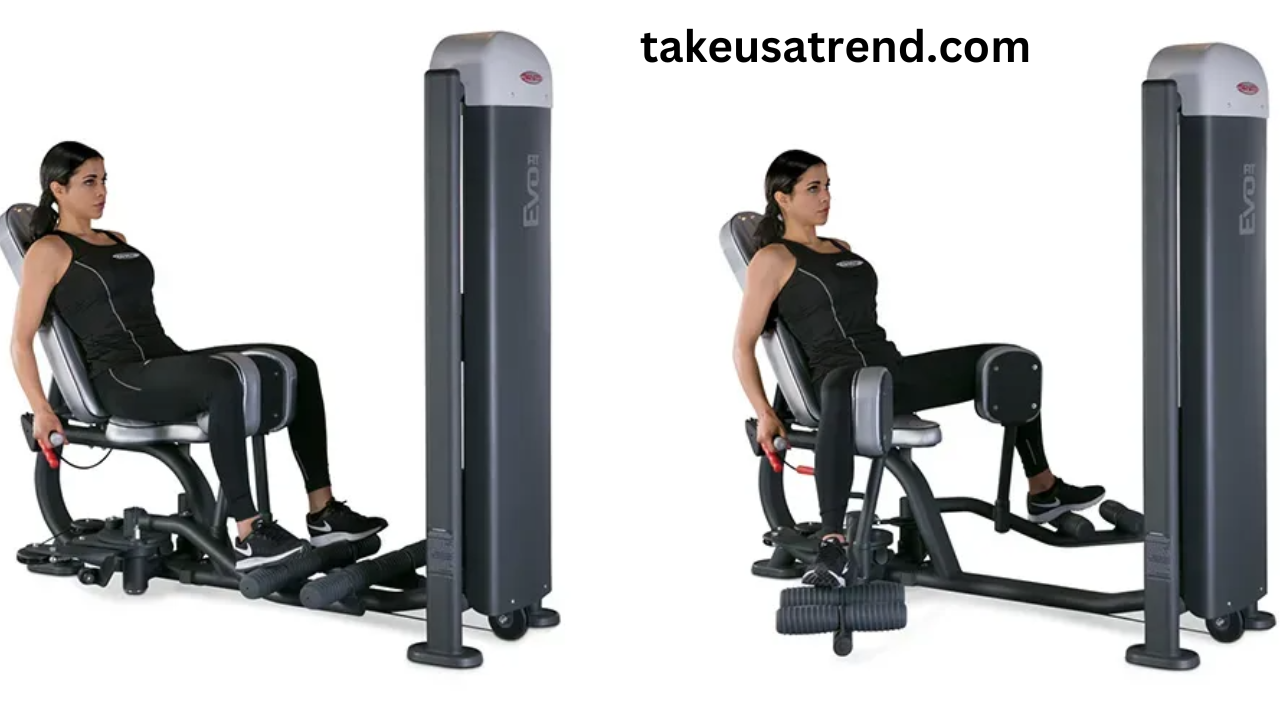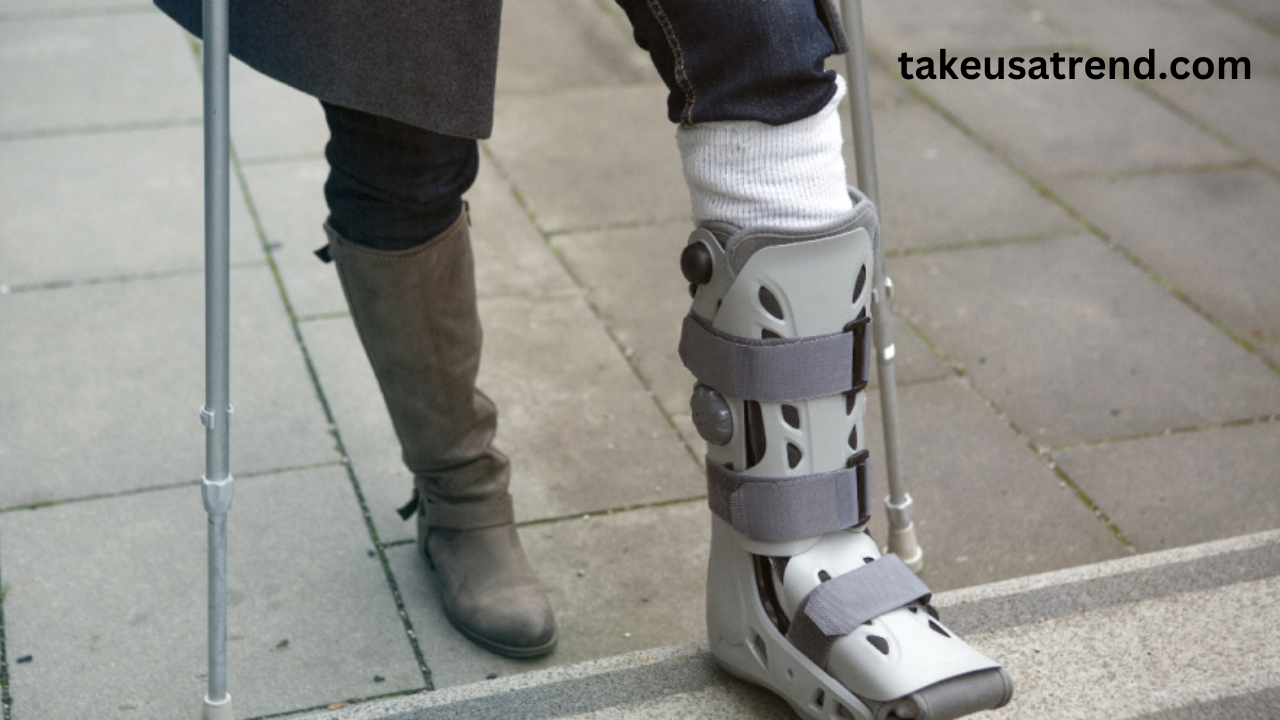

The Abductor Machine to Strengthening Your Outer Thighs and Glutes
When it comes to shaping and strengthening the legs, most people focus on the quadriceps, hamstrings, and calves, but one area often overlooked is the outer thigh and hip region. The abductor machine is a gym equipment specifically designed to target the hip abductors, a group of muscles crucial for many movements, such as walking, running, and maintaining balance.
In this article, we’ll take an in-depth look at the abductor , exploring its purpose, the muscles it works, how to use it correctly, and the benefits of incorporating it into your fitness routine.
What is the Abductor Machine?
The abductor is a piece of gym equipment used to target the hip abductor muscles, which are responsible for moving the legs away from the midline of the body. It’s a common fixture in most commercial gyms and is designed to help you isolate and strengthen these muscles through a controlled abduction movement.
Typically, the machine consists of a seat (often with a backrest) and two padded leg rests on either side. The user sits down, places their legs against the pads, and pushes their legs apart, against the resistance of the machine.
The abductor machine comes in a variety of designs, but all are built to allow you to engage the hip abductors (glutes, tensor fasciae latae, and other stabilizing muscles in the hip region) without needing to rely on other movements or equipment.
Anatomy of the Hip Abductor Muscles
To understand why the abductor is so effective, it’s essential to know which muscles it targets. The hip abductors include the following:
- Gluteus Medius: This muscle is located on the outer surface of the pelvis, covering a portion of the glute area. It is primarily responsible for moving the leg out to the side and stabilizing the pelvis when standing or walking.
- Gluteus Minimus: A smaller muscle beneath the gluteus medius, the gluteus minimus also aids in abduction and external rotation of the hip.
- Tensor Fasciae Latae (TFL): A small muscle located on the outer part of the hip, the TFL is involved in stabilizing the hip and thigh during movement. It also helps in abduction, flexion, and internal rotation of the hip.
These muscles are vital for activities like walking, running, climbing stairs, and maintaining balance while standing. Strengthening them helps improve lower body functionality and contributes to better posture and stability.
How to Use the Abductor Machine
Using the abductor correctly is crucial for maximizing its effectiveness and reducing the risk of injury.
1. Adjust the Seat and Leg Pads
Before using the machine, adjust the seat and the position of the leg pads. Sit on the machine and make sure your back is resting comfortably against the backrest. The leg pads should be positioned just above your knees, so your legs are bent at a 90-degree angle when you begin the exercise. Most machines allow you to adjust the width of the pads to accommodate your body size and comfort.
2. Set the Resistance
Choose an appropriate resistance level based on your strength and fitness goals. Start with a lower resistance if you’re new to the exercise and gradually increase the weight as you build strength.
3. Sit with Proper Posture
Ensure that your posture is correct before starting. Sit back comfortably with your feet flat on the floor and knees bent at 90 degrees. Keep your core engaged and your back straight throughout the movement to prevent strain on your lower back.
4. Engage the Hip Abductors
To begin the exercise, push your legs apart by squeezing your glutes Abductor Machine and using your outer thighs to separate your knees. As you push your legs outward, make sure to keep the movement controlled. Exhale as you push outward, and inhale as you slowly return to the starting position.
5. Perform the Movement
Perform the movement slowly and steadily, focusing on using your abductors (outer thighs) to move the legs. Avoid jerking or excessively pushing the machine. The goal is to maintain control of the movement and feel the tension in the target muscles.
6. Return to Starting Position
After reaching the end of the abduction, pause briefly and then return your legs to the starting position in a controlled manner. This ensures that your muscles remain engaged throughout the movement and prevents the use of momentum.
7. Repeat
Repeat the movement for the desired number of reps. For most people, a set of 10-15 reps works well, with 3-4 sets per workout.
Previous article; The ASO Ankle Brace to Ankle Support and Injury Prevention
Benefits of Using the Abductor Machine
Incorporating the abductor into your fitness routine can provide a variety of benefits, both for your overall fitness and for specific athletic goals.
1. Strengthens the Outer Thigh Muscles
The most obvious benefit of the abductor is its ability to target the hip abductors. Strengthening the gluteus medius, gluteus minimus, and tensor fasciae latae can improve muscle tone and shape in the outer thigh area, giving your legs a more defined appearance.
2. Improves Hip Stability and Functionality
The abductor muscles play a crucial role in stabilizing the pelvis and supporting the movement of the lower body. By strengthening these muscles, you can improve your hip stability, which can enhance your ability to perform functional movements like walking, running, and climbing stairs. This is particularly beneficial for older adults or individuals who have mobility issues.
3. Enhances Posture
When the hip abductors are strong, they help maintain proper pelvic alignment, which is essential for good posture. Strong abductors can help prevent slouching and contribute to a more upright, balanced posture, reducing the risk of lower back pain.
4. Prevents Injuries
Weak hip Abductor Machine are associated with a variety of injuries, particularly in sports that involve running, jumping, or lateral movements. Strengthening these muscles can reduce the risk of hip, knee, and lower back injuries. It also helps prevent issues like IT band syndrome, which is common among runners and athletes.
5. Supports Other Lower Body Exercises
Strong abductors contribute to better performance in other lower body exercises, including squats, lunges, and deadlifts. Since the abductors play a stabilizing role during these movements, having strong abductors will help improve form and reduce the risk of injury.
6. Aids in Glute Development
While the abductor primarily targets the outer thighs, it also engages the glutes to a significant degree. If you’re looking to develop and shape your glutes, the abductor can be an excellent addition to your workout routine. The glutes are essential for power, strength, and stability in athletic movements.
7. Improves Flexibility
Using the abductor helps improve the range of motion in the hips. Over time, regular use of the machine can increase flexibility in the hip joint, allowing for better movement and greater mobility in everyday activities and sports.
Common Mistakes to Avoid When Using the Abductor Machine
While the abductor can be very effective, it’s essential to use it properly to avoid injury and maximize its benefits. Here are some common mistakes to watch out for:
1. Using Too Much Weight
Using excessive weight can lead to poor form and strain on the muscles and joints. Start with a manageable weight that allows you to perform the exercise with good control, and increase the resistance gradually as you build strength.
2. Jerking the Legs Apart
Using momentum to jerk your legs apart is a common mistake that reduces the effectiveness of the exercise. Always perform the movement in a slow, controlled manner, focusing on engaging the target muscles.
3. Overextending the Legs
Pushing your legs too far apart can lead to strain on the hip joints and surrounding muscles. Make sure to stop the movement when you feel the greatest tension in your abductors and avoid pushing beyond your natural range of motion.
4. Poor Posture
Leaning forward or arching your back excessively can place unnecessary stress on your spine. Keep your back pressed firmly against the backrest and maintain good posture throughout the movement.
Alternatives to the Abductor
While the abductor machine is an excellent way to isolate the hip abductors, there are other exercises that can also work these muscles effectively:
- Standing Hip Abduction: Stand with your feet hip-width apart, hold onto a sturdy surface for balance, and lift one leg outward to the side. Lower the leg and repeat. You can add ankle weights for increased resistance.
- Lateral Band Walks: Place a resistance band around your thighs just above your knees, squat slightly, and take small steps to the side. This exercise works the hip abductors while also engaging the glutes.
- Side-Lying Leg Raises: Lie on your side with your legs stacked on top of each other. Lift the top leg upward and lower it back down. This simple exercise targets the glutes and outer thighs.
- Clamshells: Lie on your side with your knees bent and your feet together. Open your knees as wide as you can while keeping your feet together, then lower back down.
Conclusion
The abductor machine is a valuable tool for strengthening the hip abductors, improving lower body stability, and enhancing functional movement. Whether you’re looking to shape your outer thighs, boost your athletic performance, or prevent injuries, incorporating the abductor into your workout routine can provide numerous benefits.
By using proper form, starting with manageable resistance, and combining the machine with other complementary exercises, you can unlock the full potential of your hip abductors and enjoy better balance, flexibility, and strength in your lower body.
Strengthening your outer thighs and glutes not only helps with muscle tone but can improve your everyday mobility and contribute to overall better health and performance.







